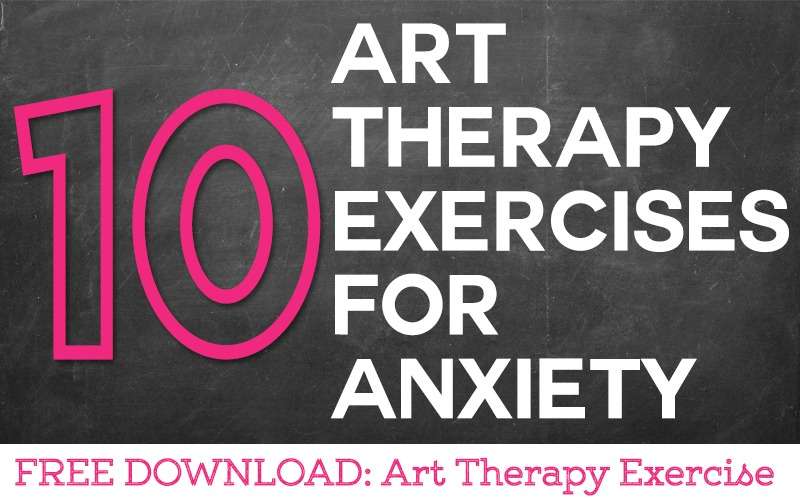1. MIND BODY CONNECTION
The mind and body are closely connected and can influence each other in a feedback loop whereby the mind creates feelings of tension in the body, and heightened feelings in the body leads to overthinking in the mind.
In this exercise, ask your client to use a pencil or pen to draw the outline of a body. Before your client draws the body outline, ask them to take a minute to reflect on physical feelings in their own body in this moment and consider if their body is feeling any tension, pain or discomfort in any areas.
Incorporate the knowledge of these physical feelings when drawing the body outline.

———————————————————————————————————-
2. 1 MINUTE BRAIN DUMP
Ask your client to draw a large circle to represent a thought bubble. Inside the thought bubble, ask your client to draw or write words to brain dump all of the issues they are currently feeling anxious about. Do this exercise in a minute. Using a shortened time frame will help your client “dump” their worries and reduce the possibility of rationalising or minimizing their feelings of anxiety.

———————————————————————————————————-
3. MIND MAP ANXIETY
Explain to your client the concept of mind mapping. Ask your client to then create a mind map focusing on one current pervasive issue that is causing anxiety at this time. As part of the mind map, label the components that contribute to the anxiety. Some examples of labels to consider in the mind map:
Some examples of labels to consider in the mind map:
- What triggers the initial situation
- Emotional feelings
- Physical feelings
- Negative thoughts
- Interpersonal interactions
- Calming techniques
Each label may be represented multiple times.
———————————————————————————————————-
4. GRATITUDE JOURNALING
Ask your client to use journaling as a method of exploring gratitude within their life. This exercise can be done generally by exploring all facets of your client’s life or it can be done with a specific focus on a situation that is causing your client anxiety. For eg. If a situation at work is causing anxiety, the gratitude journaling could focus on things to be grateful about in their employment outside of the stressful situation that exists, ie helpful colleagues, good pay, interesting work etc.
———————————————————————————————————-
5. VISUAL STARTER
Reduce your client’s anxiety about creating art by providing a visual starter to help loosen them up. Use the download provided as a stimulus to create an artwork. A number of prompts are provided in the download. You can use each prompt to create various individual artworks or use all of the prompts for a larger artwork.
———————————————————————————————————-
6. WORRY CLOUD
Ask your client to draw a cloud where all of their worries can be placed inside. Your client can then transform their drawing to show their worry cloud being blown away by the wind. As clouds also reshape, your client can use this metaphor as a process of reshaping their own worries.
———————————————————————————————————-
7. COMFORT CASTLE
Ask your client to create their own castle of comfort. The castle can have many levels that contain many of the personal comforts your client has. Your client can use this comfort castle as a process of implementing coping strategies to deal with anxious feelings that arise.
———————————————————————————————————-
8. MANDALA
Introduce your client to mandala drawing. This ancient art form helps with feelings of anxiety as they require focused attention to create the patterns. The repetition of patterns and rhythmic movements help to reduce heightened emotions.
Research suggests (Can Coloring Mandalas Reduce Anxiety?) that “structured coloring of a reasonably complex geometric pattern may induce a meditative state that benefits individuals suffering from anxiety.”
A replication study ( Can Coloring Mandalas Reduce Anxiety? A Replication Study ) also supports the hypothesis that colouring a mandala reduces anxiety.


———————————————————————————————————-
9. CREATE PATTERNS
Similiar to mandala’s, you can introduce your client to creating their own patterns. An artform called Zentangle has emerged in recent years which falls under this category of pattern drawing. Zentangles are miniature pieces of abstract patterns that are defined as “artistic meditation” through the process of focused attention in creating the patterns.
Watch this video for an example of creating patterns.
———————————————————————————————————-
10. AFFIRMATION CARD
Ask your client to create an affirmation card or series of cards that they can carry in their purse or wallet. At any time they feel anxious they can look at the affirmation card and reflect on the affirmation to help them deal with their anxious feelings.
Examples include:
- This too shall pass
- Breathe calmly
- I am calm
- I live in peace
- The future is good
- I am free
- I am not in danger, just uncomfortable
- This will become easier
- I have control over my thoughts
- STOP!
- Find gratitude for 3 things
While art therapy is its own field, you can also use self-directed art to express your creative side, reduce stress, and get in touch with your feelings. Most of us understood the power of art instinctively as kids: Virtually all children know the joys of sculpting something with play-dough, painting something with fingers, or drawing with crayons and other materials.
Other than making random doodles in the margins of a page, if you’re like most adults, you probably don’t express yourself with art as you did when you were a kid. You may not think you’re any “good” at creating art, or you may not think it’s worth your time, but art is actually a valuable pastime.
There are many reasons that art is a great stress relief tool, even for those who don’t consider themselves artistically inclined.
Benefits of Art Therapy
Whether you could give Vincent van Gough a run for his money or can barely draw a stick figure, art is a fantastic way to reduce stress. Results of a 2016 study published in the Journal of the American Art Therapy Association found that just 45 minutes of creative activity can reduce your stress, regardless of artistic experience or talent.
Here are some ways that creating art can help alleviate stress:
- Acts as a form of self-care: Sometimes, with all of life’s responsibilities, we forget that we need and deserve downtime and self-care. Taking even a few minutes on a regular basis to devote to a hobby can give you more of what you need in this area. With art, you have the additional benefit of being left with something beautiful (or at least interesting) to show for it.
- Helps you tap into a “state of flow”: Some psychologists describe flow as becoming deeply engrossed in an activity. Similar to meditation, flow can improve performance and lower stress levels.
You may experience flow when you’re practicing an instrument, playing a sport, gardening, writing, painting, or drawing.
- Takes your mind off things: Creating art can take your mind off of whatever is stressing you, at least for a few minutes. It’s difficult to keep ruminating on your problems when you’re focused on creating. If your problems stay with you, you can incorporate them into your creations. Once you’re done, you should have a clearer head with which to tackle your problems again.
Sketchbooks for Stress Relief
Keeping a sketchbook is one of the easiest ways to relieve stress. It can be a form of journaling, and like journaling, it can be cathartic, creative, and stress relieving. You can use a journal for personal art therapy and stress management in the following ways:
- Begin a dream journal. A dream journal can help you identify patterns in your dreams, which point to areas of your life that need extra attention. Try keeping a notebook and pen next to your bed. As soon as you wake up, draw the first images, symbols, or words that come to your mind. Don’t worry if you’re not “good” at drawing. Your dream journal is for your eyes only.
- Draw what you feel. Draw your stress. Drawing literal or abstract representations of what is stressing you out can help you express emotions that may be difficult to put into words.
- Keep a gratitude journal. Many people keep a gratitude journal to catalog what they are grateful for. Personalize your gratitude journal by drawing the faces of those you love, places that bring you peace, or other things that you are grateful for. The process of sketching can be a great stress reliever, and revisiting your creations can also bring you some peace in the future.
- Start coloring. These days, coloring isn’t just for kids. Adult coloring books can be especially relaxing for those who don’t feel artistic, but still want to create beautiful pictures.
A Word From Verywell
If you continue to feel overwhelmed by stress and it starts to interfere with your daily life, talk to your doctor. They might recommend a therapist who can offer support and techniques for managing your stress.



